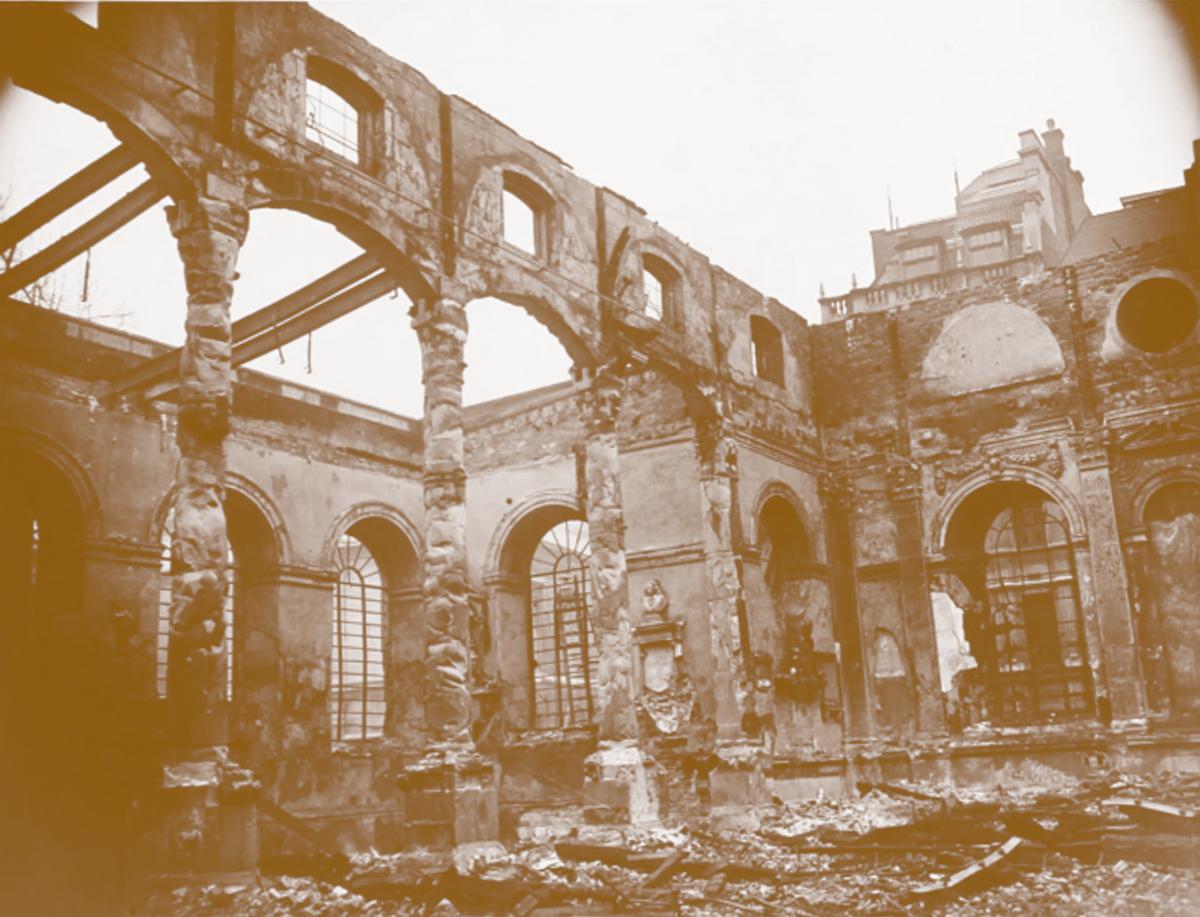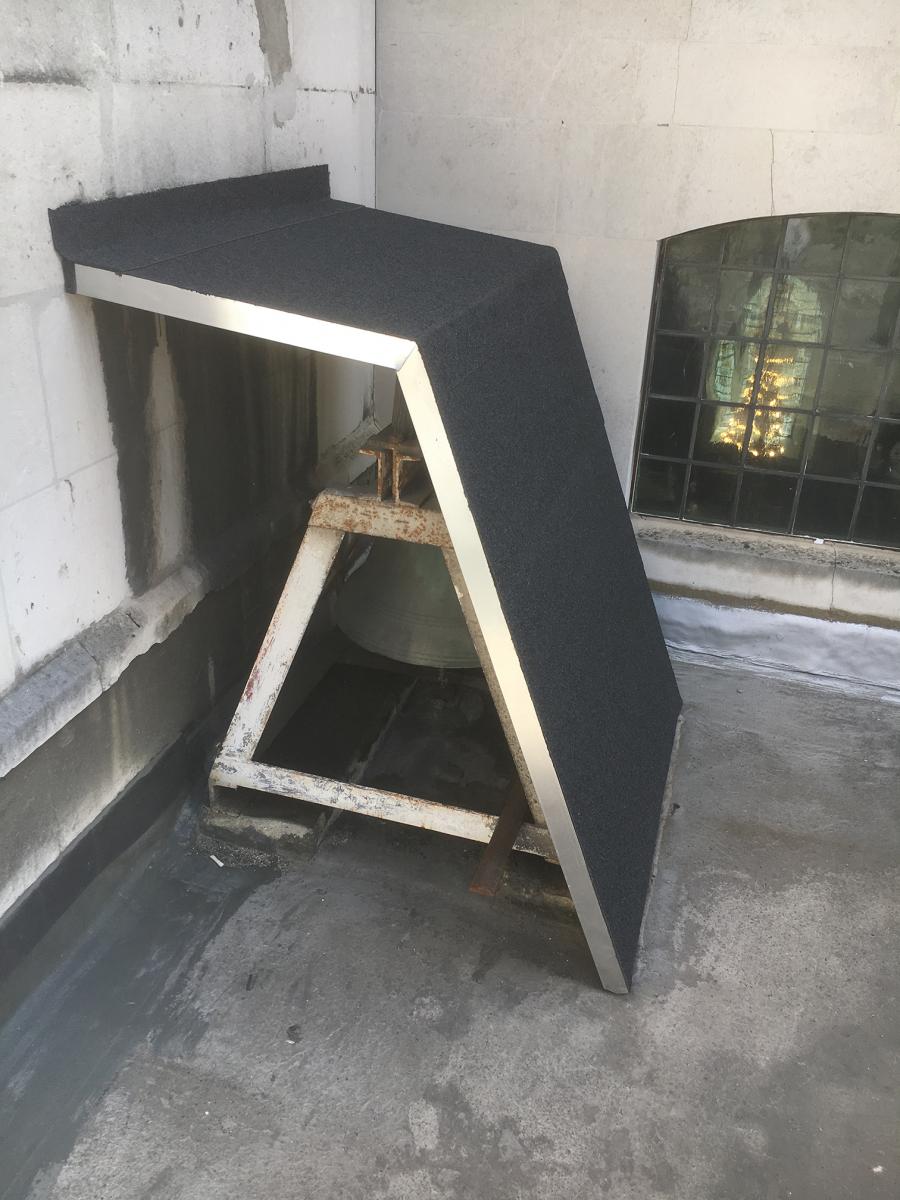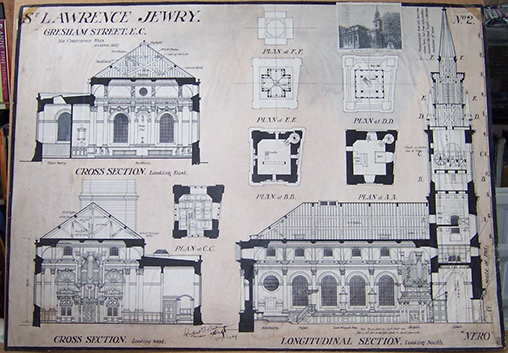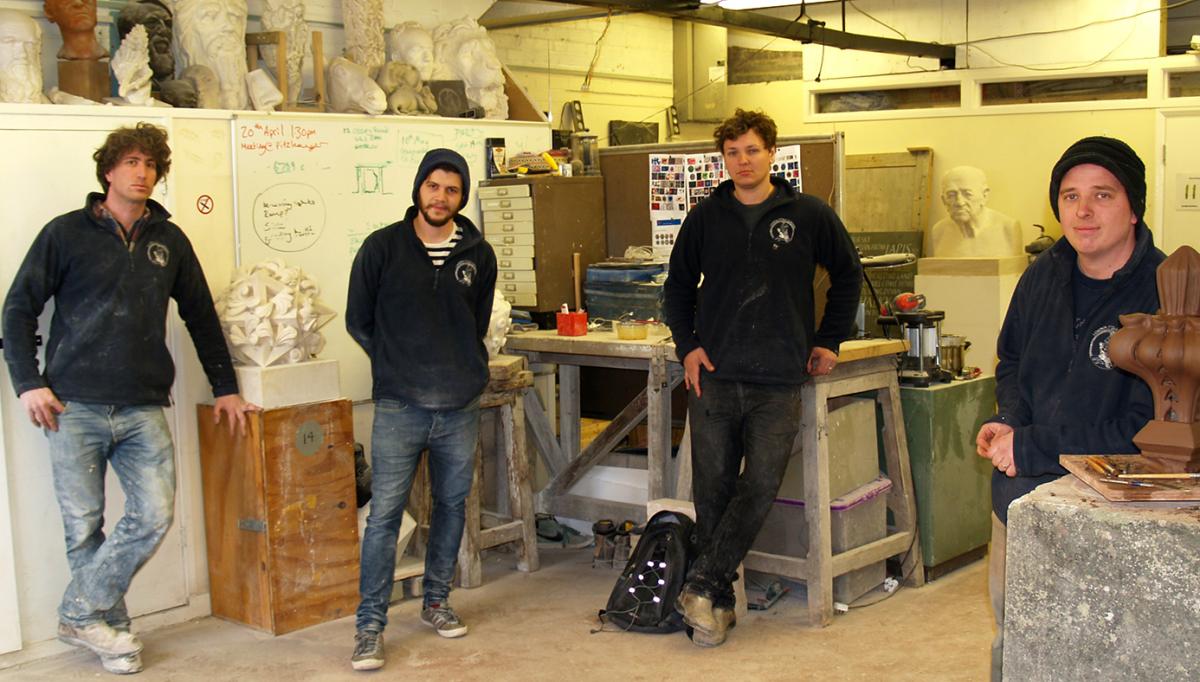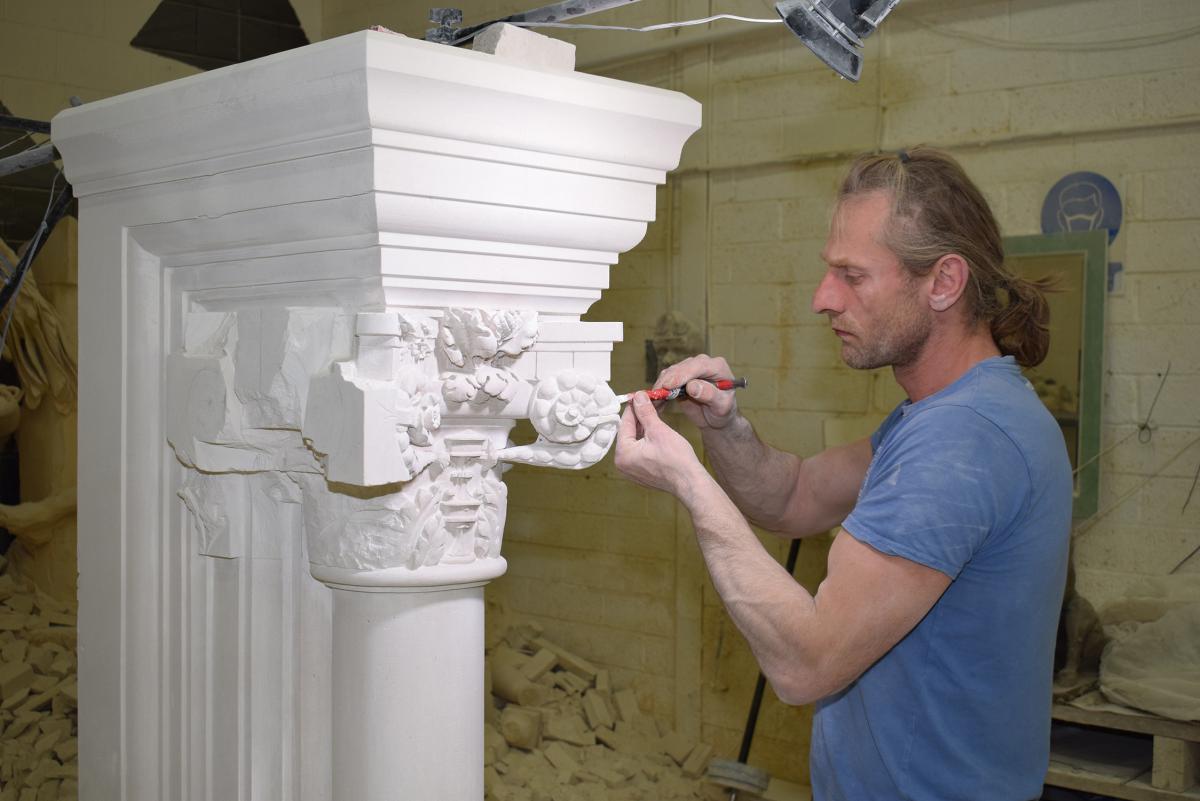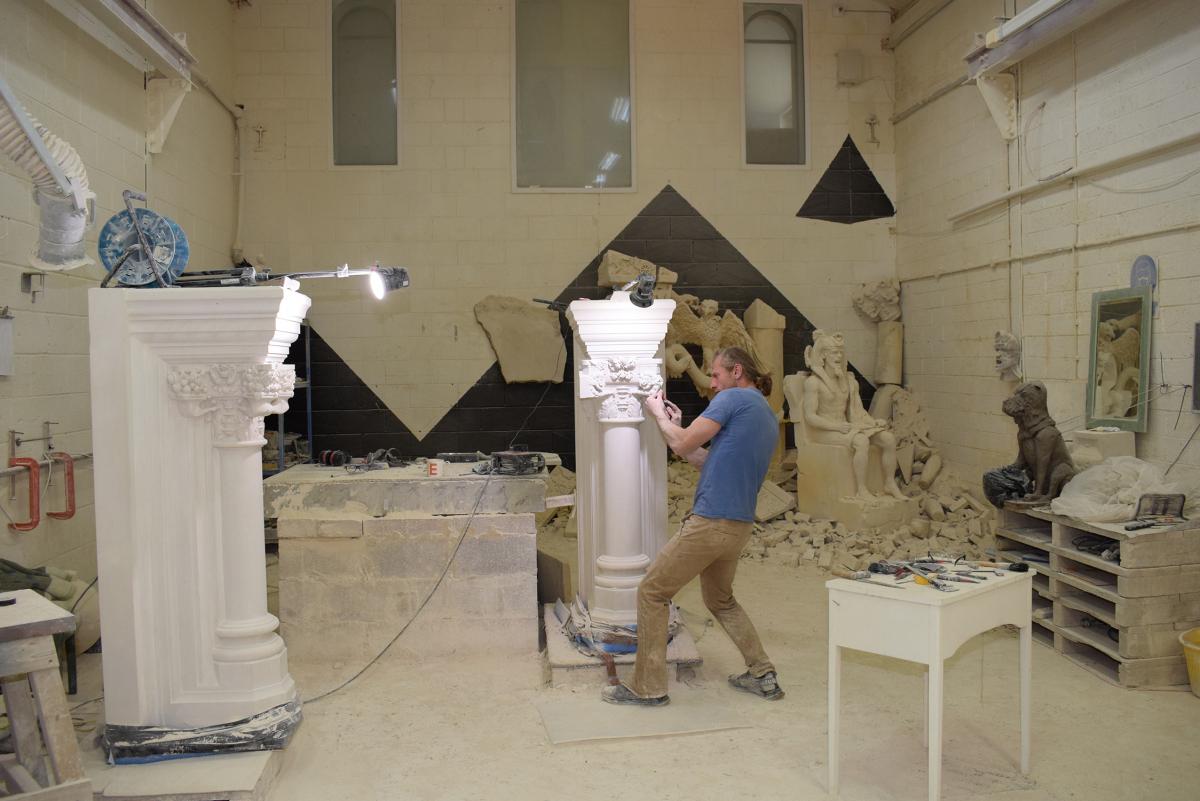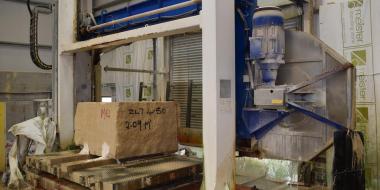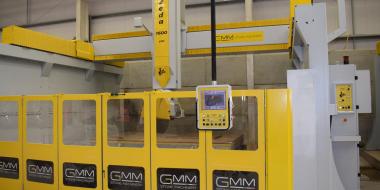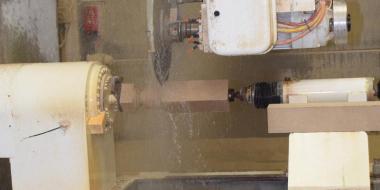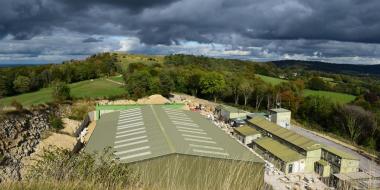David Coster, the plain speaking Director of Advanced Stone & Masonry Supplies, which sells Stain Proof and Tenax products in the UK, talks to Steve Murphy, hands-on MD of Planet Granite near Coventry.
David: Quartz, ceramic/sintered or natural stone?
Steve: For job satisfaction and creativity, natural stone. But for ease of manufacture and making money, 20mm quartz jobs all day long.
David: Straight off the machine or hand finished?
Steve: We use a Breton for polishing all our sinks. Everything comes off the machines probably to a standard that for many fabricators would go out. We have the tool manufacturers come and set up the tools for us using Zolllers. We pay extra for that. We still check the quality of everything and hand finish, so I would say probably every sink that comes from us is finished by CNC and still hand finished as well.
David: Physical templates or digital?
Steve: We have been digital templating with LT55s – or LT-2D3Ds, I should call them now – for six years. It was the only way to go really – completely digital. We can edit the drawings. The lads in the factory spend a lot of time on the CADs editing stuff, chopping bits up. If it was a physical template it would be highly inaccurate.
Customers – love them or hate them?
Love them and hate them. Both. I love some and I hate some. You get some customers who are an absolute nightmare. But then, fortunately, every so often you get really, really good ones that make up for it.
What’s going to be your next investment?
Software… for the smooth running of the business. There are various programs on the market now – Moraware, Stone Profit from Capterra, things like that – so we’re going to be investing in that. We have our own CRM system that we have custom built but we’re thinking now more about swapping over to one of the systems designed specifically for stone fabricators. CRM [customer relationship management] is about the whole process. We have our stock on there, our quotations, we’ve got our invoicing on it, our calendar for booking in jobs for fixing and templating. All the information of the whole business is on our CRM. But I think we’re going to move over to one that’s purpose built for stone, that’s tried and tested with bar codes and QR codes. Ours has got a bit clunky after so many years.
With COP26 and Net Zero companies are being told to cut their carbon footprint. Do you have any plans in place?
We are looking at putting solar panels on the roof. We recycle our water. Everything we do is trying to be low energy. The waterjets we have are very low energy.
Have you felt the effects of Brexit?
Steve: The price increases by all the suppliers. Everyone’s put their prices up. Getting stuff is getting difficult as well.
How do you use social media?
I just use Instagram, really. My handle is PlanetGranite_Steve. I post pictures when I see something I think is interesting and, being in the business, I appreciate – something that looks particularly good or a nice material or I’m proud of the lads for what they have done. I won’t put a white, L-shape quartz job up with a cut out for a sink and a hob because to me it’s not showcasing our ability, it’s just something we do. I probably post a picture once or twice a week, but I always try to make sure I took an all-right photo on my phone and it’s something to be proud of that the lads have achieved.
What sort of level of production do you achieve?
We don’t get easy jobs here. People say they’re doing 20 jobs, 30 jobs a week but I don’t believe for a minute they’re doing £6,500-£7,000 jobs. I think they’re talking about £1,500-£2,000 jobs. We do jobs that have window cills, full height splash backs, mitred end panels, all sorts. That’s completely different to an L-shape.
What trends do you see in materials. Have we reached peak quartz?
I definitely see natural materials making a come-back – most definitely over the past 12 months. Nice big granite islands and book-match wraps. We have just done a lovely Panda White and another one was Honey Onyx. That was nice. Blue Roma. I don’t how many Blue Roma quartzite jobs we’ve done but I bet it’s 20, maybe more. I think we might see some back-lit onyx making a bit of a come-back next year. And people using real marble. When you’re working with real Calacatta you can definitely see the difference. Have we seen the back of quartz? Yeah, maybe. The white quartz with a grey vein in it might go the way of the sparkly black. Maybe there’s going to be a change.
When you look to the future do you think it will be worse, better or the same?
The future is going to have to be better than the past two years. We spent the whole of Covid investing in a whole host of new machinery and new buildings. We’ve got our Robo Sawjet and two other robots, a bridge saw, another edge polisher, two more buildings. We have spent Covid preparing for coming out of it, really.
